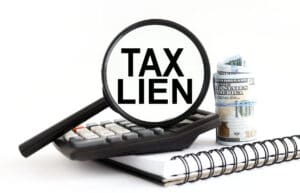Tax lien tactics, part 2: removing or limiting a lien
In the first part of this post, we gave an example of how the IRS can use federal tax liens as part of its collection actions. The case involved a rap musician by the name of Rick Ross who once played Vegas but ran into trouble with the IRS for alleged underpayment of his taxes.
Ross tried to blame his former accountant for the two tax liens that the IRS imposed. As we will explain in this part of the post, trying to pass the buck to your tax preparer is not really the right way to go about clearing up a tax lien.
For one thing, a taxpayer is ultimately responsible for the contents of his or her tax filing. Even if you use a professional preparer, you’ve got to review the return before it is filed.
But there are also some specific steps that need to be taken to get a tax lien released or limit its impact.
Determining the lien amount
For starters, it’s important to determine the accuracy of the lien amount. This involves looking at the tax assessment that the lien is seeking to enforce.
Did the taxpayer file a return? Or is the tax assessment based on a substitute return filed by the IRS?
If it’s a substitute return, the first step in addressing the lien may be to get past returns filed. This is because the IRS will likely not have included deductions that could have benefited the taxpayer. Filing an actual return will start the clock ticking on the limitations period for how long the IRS has to collect the debt.
There is also another reason why looking at the tax assessment that prompted the tax lien is important. It enables you to identify any tax penalties that could potentially be waived.
Lien release or withdrawal
The general rule is that the IRS will not withdraw a lien until your tax debt is paid. But if you entered into a payment agreement, it is possibly that you could get the lien released before the taxes are all paid off.
You may also be eligible to have a lien withdrawn if the IRS didn’t follow proper procedures in imposing the tax lien. There are very detailed procedural requirements for notice of a federal tax lien. If those requirements weren’t honored, you may be able to get the lien withdrawn.
There are also situations where you may be eligible to allow other creditors to take priority over the IRS. This is called subordination.
And finally, there can be specific types of property that the lien can get removed from. This is called discharge.
If you are facing a federal tax lien, a knowledgeable attorney can explain the options and help determine what is best for your particular situation.




